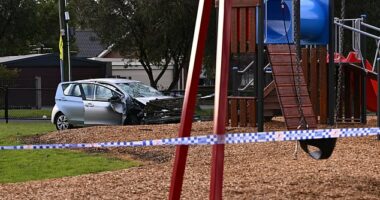Masses of yellow foam and dead fish, seahorses, and other creatures washed up last week between Waitpinga and Parsons beaches within the Newland Head Conservation Park, attracting online attention.
The foam also resulted in over 100 surfers and beachgoers coming down with mystery cold and allergy-like symptoms over the weekend, including itchy eyes, blurred vision, coughing, and breathing difficulties.

A type of planktonic algae called Karenia mikimotoi is to blame for the suffering, researchers from the University of Technology Shauna Murray and Greta Gaiani have found, which produces a toxin with adverse effects on both humans and sea life.
The research was conducted using water samples provided by the SA government from Waitpinga Beach, Petrel Cove Beach, Encounter Bay Boat Ramp, and Parsons Headland on Tuesday.
While K. mikimotoi is commonly found in Australia’s coastal waters, it is typically sporadic and mixed with other species of algae.

However, under certain conditions, it’s not uncommon for one species of algae to dominate all others in a certain area of water, forming what scientists call an ‘algal bloom’.
The toxins producted by K. mikimotoi is currently not well understood by the scientific community, said the researchers, however microalgae typically wrecks havoc on fish and shellfish gills, making it impossible for them to breath.

“Fortunately, the toxin does not persist in the environment after the K. mikimotoi cells are dead. So once the bloom is over, the marine environment can recover relatively quickly.”
It’s still unknown whether warmer sea temperatures contributed to this harmful algal bloom off the coast of South Australia, or more frequent blooms of K. mikimotoi generally.
The species has previously caused massive damage to ecosystems around the world, including Asia, Europe, South Africa and South America.






